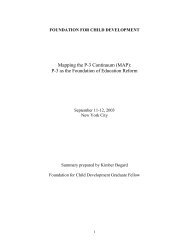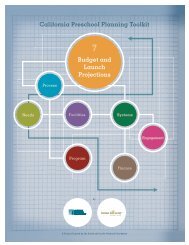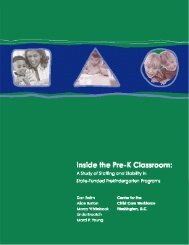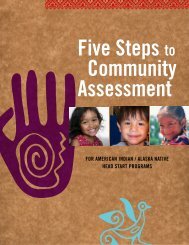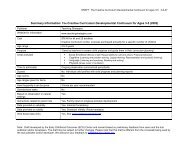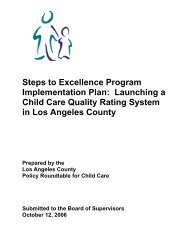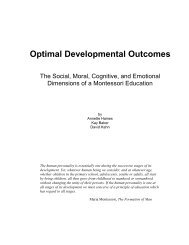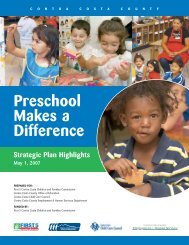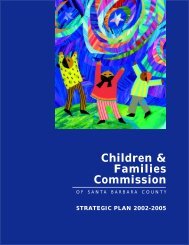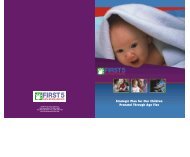Download this file - Plan4Preschool
Download this file - Plan4Preschool
Download this file - Plan4Preschool
You also want an ePaper? Increase the reach of your titles
YUMPU automatically turns print PDFs into web optimized ePapers that Google loves.
No Child Left Behind Act <br />
Background<br />
On January 8, 2002, the No Child Left Behind (NCLB) Act of 2001 was passed by<br />
Congress. This federal law contains the most sweeping changes to the Elementary and<br />
Secondary Education Act (ESEA) since ESEA was enacted in 1965. NCLB also has<br />
made the federal role in education more prominent than ever. It changed the federal<br />
government’s role in kindergarten through grade twelve education by requiring schools<br />
to demonstrate their success in terms of the academic achievement of every student.<br />
With Title I as the cornerstone and students of greatest needs as the focus, NCLB<br />
emphasizes stronger accountability for results, expanded options for parents, and an<br />
emphasis on improving teacher quality. NCLB includes the following requirements:<br />
• With academic content standards in place, states must test every student’s<br />
progress toward those standards by using assessments that are aligned with the<br />
standards. The law expands the current requirement that all schools administer<br />
tests in each of three grade spans: grades three through five, grades six through<br />
nine, and grades ten through twelve. Beginning in the 2005-06 school year, tests<br />
must be administered every year in grades three through eight and once in grades<br />
ten through twelve in mathematics and reading. Beginning in the 2007-08 school<br />
year, science achievement must also be tested.<br />
• Each state, school, and local educational agency (LEA) is expected to make<br />
Adequate Yearly Progress (AYP) toward meeting state standards. (An LEA is a<br />
school district or a county office of education.) Test results are sorted to measure<br />
the progress of all students, including students who are economically<br />
disadvantaged, are from racial or ethnic subgroups, have disabilities, or have<br />
limited English proficiency (see the Adequate Yearly Progress section for more<br />
information).<br />
• State, school, and LEA performance is publicly reported in report cards (see the<br />
Accountability Report Cards section for further information).<br />
• If a Title I school or LEA fails to make AYP for two or more consecutive years in<br />
specific areas, it is identified for Program Improvement (see the Program<br />
Improvement section for further information).<br />
Adequate Yearly Progress<br />
All schools (including charter, alternative, and small schools), districts, and numerically<br />
significant subgroups are required to make AYP each year. California’s new definition of<br />
AYP has four components. In order for any school or district to make AYP, the school or<br />
district must have:<br />
1. At least a 95 percent student participation rate in the statewide assessments <br />
overall and for each numerically significant subgroup. <br />
60



